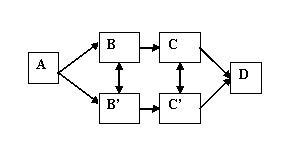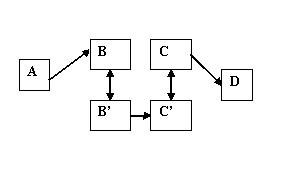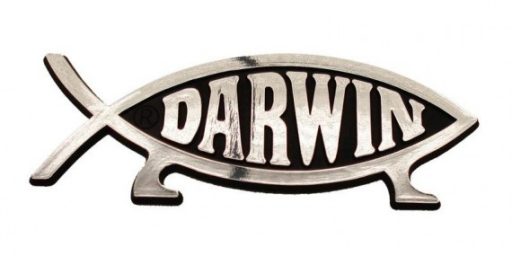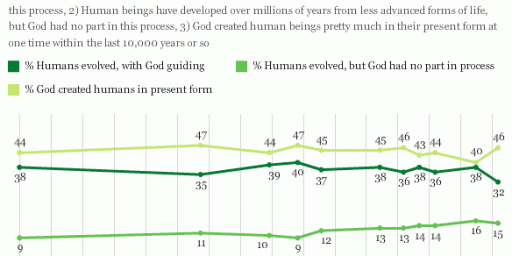Why Irreducible Complexity Isn’t Really A Big Deal
I always like posting on Intelligent Design as it always seems to drive those who think it is a big deal up the wall…and I admit I gain some amount of pleasure from seeing this. Anyhow the typical response is that Irreducible Complexity (IC) provides a very serious challenge to evolutionary theory. This is just simply not the case. Irreducible pathways can be explained as follows: Duplication and Loss of Function. Here is the idea in some simple pictures.

Notice that we can get from A to D a variety of ways. The nodes B’ and C’ are duplicates of B and C. Now via mutations the pathway becomes,

Notice that now we have to go through each node, whereas before we did not. This pathway is IC. Remove any part (i.e. node) and the pathway no longer functions. Does loss of function happen in nature? Yes. Does duplication? Yes. Do we need to invoke a supernatural designer? No. The Principle of Parsimony tells us we don’t want to make any hypothesis any more complicated than it needs to be. Hence IC is not a problem for evolutionary theory.
PZ Myers at Pharyngula does a much better job of explaining this. You can also find out more here. For even more, there is the Creationist Claims FAQ. Oh, and no, this does not mean you must become an atheist, that is just Creationist propaganda.
Update: In comments Joe Carter argues that somehow I’ve missed the point that removing A, B or C renders the pathway inactive. I don’t see how Joe can come to the conclusion that I’ve missed this point given that I have written,
Notice that now we have to go through each node, whereas before we did not. This pathway is IC. Remove any part (i.e. node) and the pathway no longer functions.
In other words, I was writing that removing A, B, B’, C, or C’ renders the pathway non-functional. In short, I did not “miss the point”. However, I think it is fair to say that Joe has missed the point as he has left the main conclusion completely intact; that the evolution of IC systems is not impossible.





You seem to missing the point that if you remove one of the nodes (A, B, C) then it is not longer functional. IC does not mean that there are no alternate pathways. As a general rule you should never copy anything that PZ Myers puts up. He may be a biologist but he isn’t exactly a logical thinker.
Joe,
Uhhhh…yeah, no kidding I wrote pretty much the samething. See, it is right here,
Beyond re-stating one of the points of my post your comment is…well…pointless.
As for Myers, while he and I have diametrically different viewpoints on many political issues, on evolutionary theory and biology we don’t. Sometimes being consistent and following the data leads one to having strange allies.
Mike Behe argues from analogy. He says that a mouse trap is irreducibly complex. Remove any part, say the trigger, and it won’t function. He’s wrong. It can co-opt another function, as a tie clip, for instance. Or as a kid’s spit-wad launcher (trebuchet). Mike should get another analogy, don’t you think?
Reich,
So many people have taken apart the mouse trap analogy it isn’t even funny. There is even a javascript out there that shows the evolution of the mousetrap from a sharpened spike sticking out of the floor to the trap you all know and love today.
Steve,
You noticed!
Can you hazard an answer to my question?
Yes. Yes.
My reaction to your irreducible complexity diagram is is simply, huh? You haven’t said anything. You only have a diagram which is a hypothetical construct. You have completely ignored how this applies to reality. You have not provided one single example of how your diagram corresponds to a real life biological system.
I agree, your diagram is pretty silly.
Ahh this old chestnut. “Evolutionists must present the complete evolutionary history of irreducible complex systems, otherwise we wont believe it.” And lets not forget it is an irrelevant to my post.
The point of my post is to show how it is possible via natural means for an irreducibly complex system to arise. It is quite possible and hence, the invocation of a supernatural being is unnecessary.
Try again guys.